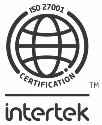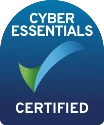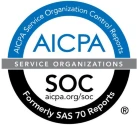
In a competitive modern insurance market, there is more pressure than ever on insurers to deliver new innovative products, faster.
The current economic climate incentivizes insurance companies to pursue digital transformation to capture new customers and release new products. It’s also a means of doing more for less. To achieve this objective, insurance companies often update their policy admin systems and IT infrastructure.
Updating tech stacks can be costly, challenging, and time-consuming , and many insurers don’t have the resources and expertise to code a new platform that supports their specific requirements. Yet outsourcing the work to another organization risks trusting expensive development with programmers who may not understand the intricacies of the insurance industry and what key features are the highest priorities.
Recently, INSTANDA was part of a panel and demo exploring the value of no-code and how it differs from low code. Read on to learn more about what INSTANDA discussed at the talk, as well as some of the exciting features of the platform that were showcased to an industry audience.
What does ‘no-code’ mean?
One of the biggest queries among those attending the discussion was simply, “what is a no-code platform?”
‘No-code’ refers to development platforms that enable users to configure and modify application software without using any coding the back-end.
Instead, no-code tools use graphical user interfaces and configurations, allowing users to quickly and easily learn how to use the platforms and create the software they want without being burdened by a lack of IT experience. No-code solutions enable insurers to build, test, and launch new products quickly, while minimizing the expense and the resources required.
Thanks to the simple interface of no-code core digital systems, insurers can use them to design products quickly, test them in the marketplace and store all documentation, while leaving the technical side of things (hosting, cloud infrastructure, etc.) to the software provider.
No-code vs low-code
Another key point of order from the panel was defining the difference between a ‘no-code’ platform and a ‘low-code’ one.
In brief, our panel speakers explained that a low-code approach is similar to a no-code platform. However, a low-code platform still requires some technical knowledge, though with tools for programmers to build software without coding as much.
Although low-code tools theoretically grant users more customization, they still require an IT background to use effectively, and are, therefore, mostly leveraged by IT professionals with coding knowledge to create more complex applications.
Insurance companies, on the other hand, while they have the technical expertise in house, they often struggle to rapidly launch new products. Given the size of their organization, and with so many teams involved, making changes to existing policies and introducing new ones is a time-consuming process . They want a solution from a provider that empowers their insurance experts to do things themselves without having to keep going back and forward with IT.
When dealing with providers like INSTANDA, who know the insurance industry inside-out and implicitly understand their requirements and objectives, it’s much easier for insurance firms to access the capabilities they need to create and manage the products and policies as well as the digital journeys and client experience that they want.
Myth busting no-code solutions
There are two pervasive myths about no-code development platforms which were also addressed in the panel. The first of these was that no-code platforms will make insurer’s IT teams redundant.
On the contrary, no-code platforms are all about eliminating the tedium from software development. This, in turn, frees up IT teams to work on other tasks, including the day-to-day management of the existing tech stack as well as ecosystem integrations, such as embedding insurance products or consuming new data sources.
The second is that all no-code/low-code platforms are created equal. The truth is that their applications and utilities vary wildly by provider. They vary in terms of how relevant their specific tools are to the industry that adopts them. Also, they vary significantly in their outlook when it comes to how much ongoing guidance and support they can offer their partners.
This is where INSTANDA’s Center of Excellence (CoE) approach to ongoing support proves its own value.
The CoE approach
INSTANDA representatives also explained to the audience that our operating model is to establish a team within the insurance firm who are dedicated to running and maintaining the business configuration. A common pain point we hear from insurers is the amount of time they spend waiting on their vendors to make a change on their behalf or launch a new product, portal, or document. By having an internal business team, insurers can develop the products and value proposition they desire without relying on a vendor’s knowledge, timeline, or capacity.
The Center of Excellence team is structured with a business analyst, whose role is to identify potential issues with the platform or the software and then recommend changes. Then there are configurators, whose job is to implement those recommendations. Finally, there are the UI/UX experts, who seamlessly integrate those changes into the customer journey.
The importance of establishing a dedicated CoE is that insurers can gradually develop their skill sets around the no-code tech they are using and can modify their products, portals, documents, rules, workflows, and their overall tech stack as they see fit. It’s designed to grant insurers freedom in how they operate, and to remove their dependence on the software provider.
The power of INSTANDA
INSTANDA is the best option for any insurer who wants full control over the development and integration of new insurance technology. The no-code nature of the platform means insurers do not need a technical background to build and integrate the system they desire.
INSTANDA’s regular stream of updates also makes it easier for insurers to remain compliant with changes and new capabilities as they develop and release new products to market.
These updates also mean that insurers who want to level up their admin system can be sure they’re always staying ahead of the competition with the most innovative and relevant tech available.
So, if you’d like to get started, or just learn more about us, visit INSTANDA’s website today.





